Handy Voltage Reference for 50 Amp Plug Wiring
Here is a picture showing 50 Amp Plug wiring and voltages commonly used in RV Parks.
However, to make things easier, I’ve added little pictures of voltmeters showing you the approximate voltage you should be seeing if you attach the probes like shown.
In real life you won’t have three volt meters so you’ll check between two connection one at a time. I feel better now.
Here are several articles you might find useful that are related to this subject :
- If you know nothing about electricity – “A Good Starting Point for learning about RV electrical systems“.
- Great article on “What are Volts and Amps?”
- Excellent article on “What is Power or Watts?”
- “Primer on the Different Electrical Services found at RV Parks“
- RV Power – Those darned complex terms – Watts, Amps, Volts
For instance, the smallest aluminum wire would be # 4 AWG. The larger the wire the more current it can carry. I used aluminum at my house and it was substantially less expensive than copper. You’ll get some emotional responses sometimes on aluminum versus copper, but if you follow the guidelines for EACH type of wire for temperature, voltage drop, etc. then it should not matter. It is just math.
For copper, No 6 THWN could be used.
For both types of wires, just follow the guidelines for length, current carrying capacity and so forth and you’ll be OK.
Products for 50 amp plugs
48 Search Results for RV Shore Connections Power
Search Results
Need Help?
 24/7 Help
24/7 Help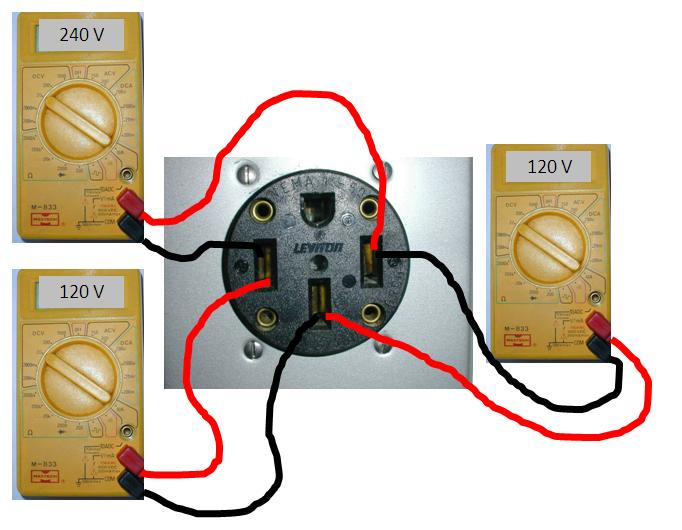
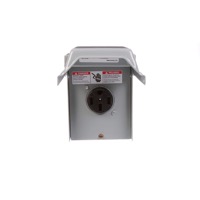
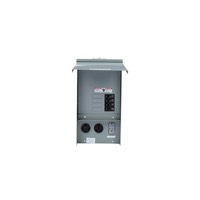
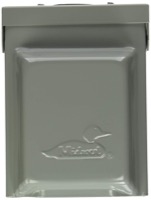
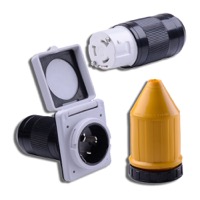
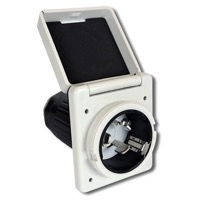
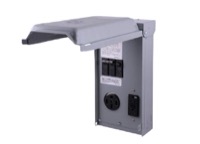
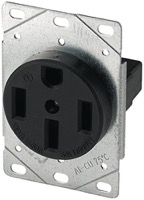
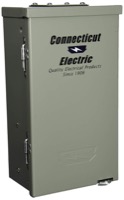
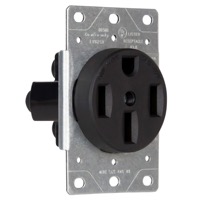
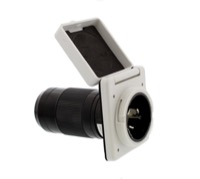
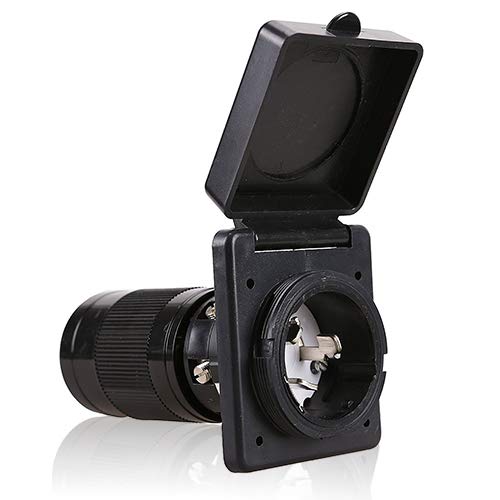

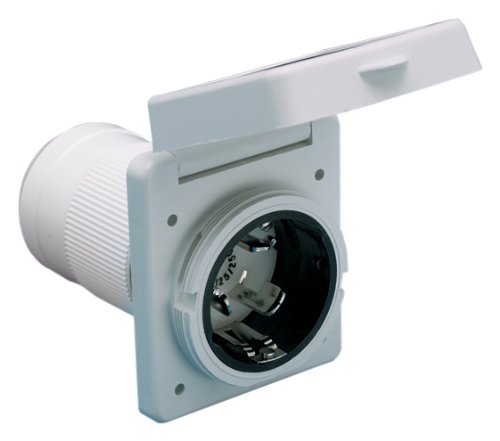


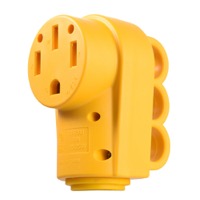
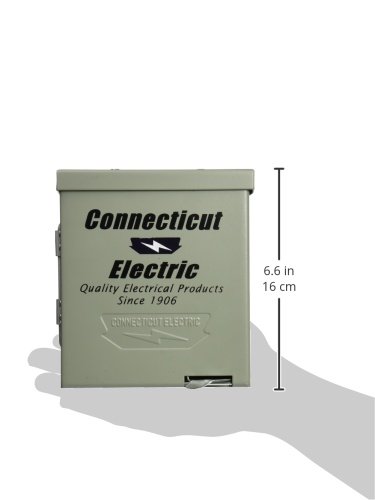
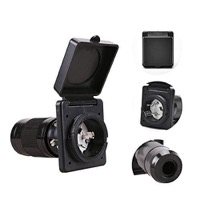
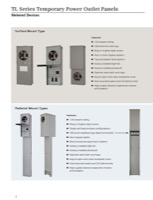
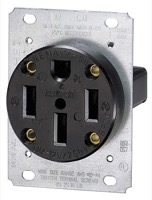
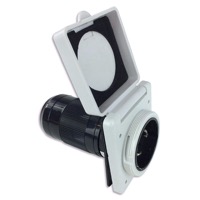
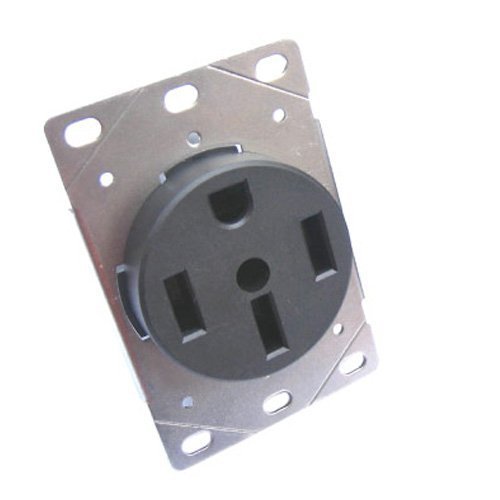
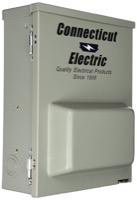
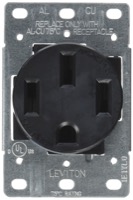
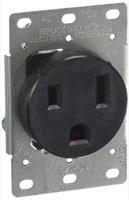
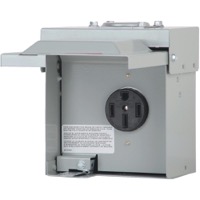
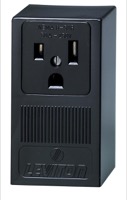
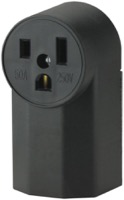
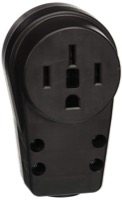
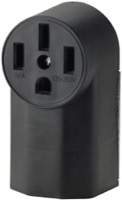
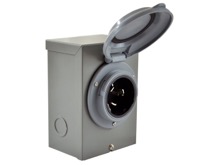
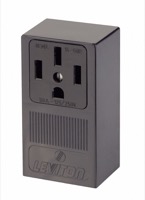

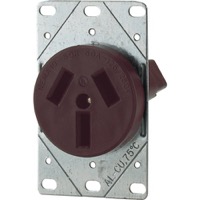



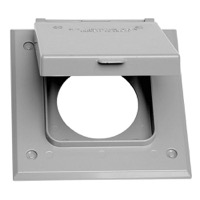
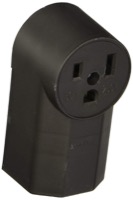
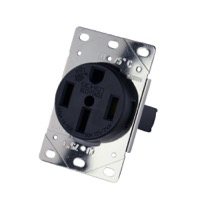

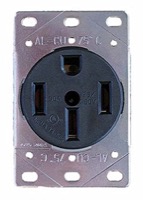
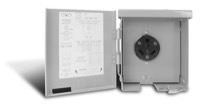
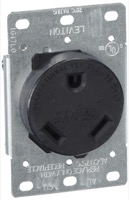
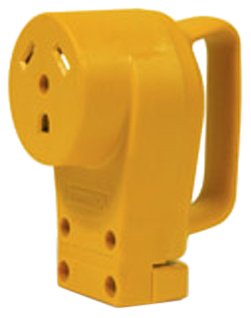
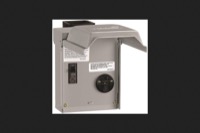
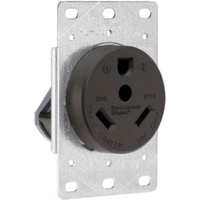
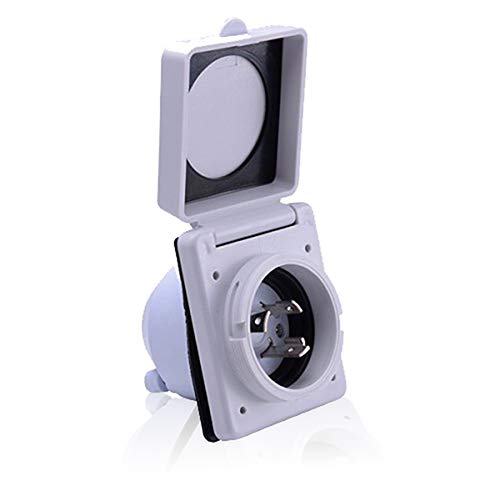
Teri B says
Can you believe that as an RV Park owner I’ve seen electricians and others use these meters hundreds of times but I find it difficult to keep in my mind how the readings should look on each hole. I have copied this picture and am pasting one on my wall for handy reference. Thanks
Marlan "Living Small" RV Guy says
Thanks Teri. Its nice knowing I could help out.
David Channell says
My understanding is that 240 volts are not allowed in RV’s. I understood that both hot legs are on the same phase, therefor a measurement between them would show zero volts. The benefit of the two hot legs would be actually more than 50 amps available, but only 120 volts. Am I wrong ?
Marlan at Rv52 says
Rather than 240 being “not allowed”, I’d say it is more likely that 240 V is not commonly used. Even in a stick house the 240 V is only used for a dryer, electric range, and maybe in the garage.
I believe an RV park which wires the plug so that each hot was the same phase leg would not be wired to code for that connecter.
But just because you would have 240V on the RV Park pedestal doesn’t mean you would see 240V in the RV unless the RV manufacturer wired the hots such that you would have a 240V plug in the RV. Now individual 120V circuits may have different hots they get their power from, but you should never care about that for most practical purposes.
I would also think that if both hots were the same phase I would actually wonder if they were off different breakers somewhere.
For a properly wired 50A plug I’m pretty sure it will show 240 V.
You are correct that you get TWO (not ONE, but TWO) 50 Amp 120 V circuits for a total of 12,000 Watts of power. This is substantially more than the 30A plug which would only provide 3600 Watts.
Brandon says
If you plug your RV into a plug that shows as you have in your diagram for 240v, you will smoke most if not all appliances on the circuit in short order. At an RV 50 amp plug in you should see 0 volts across the 2 hot legs of 120. You should see 120 volts from each hot leg seperately, metering hot leg to ground or neutral.
The metering diagram shows household 240v, and this is why you can not plug your RV into house dryer plug etc.
Forget PHASE, that term should be left out unless you start delving into 3 phase power. It’s split phase. For simplicity and non 3 phase discussions, just use LEG.
To explain – 240 comes out of transformer, it’s split in half via earth. Check out transfer diagrams to see how 120 achieved.
Per each RV hook up spot, RV parks only use one leg of 120 from transformer, this is why when you meter across the 120 volts hot legs you should see zero.
It’s not proper or improper per say it just needs to be understood how it works for intended application.
As a thinking handyman, fabricator and general tinkerer of anything I get my hands on, I was curious when I bought a 30 amp 27′ TT and needed more power and so this is what I figured out.
So on a 50 amp RV, in the RV 1/2 of the load is on one side of the 120 volt circuit and 1/2 of load is on other side of circuit. But it all comes from one leg of 120 from the transformer.
Marlan at Rv52 says
Thanks Brandon. I agree with everything you say except one thing. Why would you smoke most of your appliances? The reason I ask is because there should never be hot-hot connections – ergo never getting 240 on an appliance. In the same way, if a hot-hot connection in your single transformer connection occurred, you’d get 0VAC. So your appliance wouldn’t work either.
Brandon says
Hey Marlan you are correct. My original post needs to be corrected / edited.
So an RV park 50 amp plug in outlet will show either 0 volts across the 2 legs or 240 volts across the 2 legs. It will show 240 volts, if, when wired they used the other leg from the transformer. As long as get you 120 from each leg to neutral you are good to go.
Household 240 dryer or maybe stove will be fine for 50 amp rv service if put in matching male or female receptacle.
The issue of smoking appliances is for 30 amp rv service. The other leg is neutral. If the 2nd leg is energized with 120 it will then be completing a 240 volt circuit. That is where people have gotten into trouble. Attempting to plug in or switch out dryer or stove plugs. They hook up both legs of 120 instead of switching top leg to neutral.
One thing that strikes me as incorrect, as I’ve seen elsewhere in other forums, others claim 50 amp service is actually 2 legs of 50 amp service.
All wiring I see for 50 RV stuff is 6/3. 6 gauge is good for 50 maybe 60 amps. I’m not sure how are why that myth persists.
Brandon says
Additionally it should be clarified that stove / dryer wiring at house for 50 amp rv is temporary to turn on some lights etc. one should not camp / live in camper with this wiring set up because most dyer / stove and wiring is not of sufficient sizing and capacity to run 50 amps and should be reflected by the house breaker for that circuit.
If 30 amp RV and wired to dryer or stove with at least 30 amp breaker in house, PLUS plug properly wired, that will work fine.
Marlan at Rv52 says
This stuff is trickier than it looks. A person should really not make their own 50->30 converters or just like you said – they’ll get 240 and shazzam!
Marlan at Rv52 says
When we wired our house and added an RV plug we had a electrician do it “by the book”. We added a 50 Amp plug and made it a legitimate RV hookup. We use a legitimate 50->30A plug converter to connect our little travel trailer. http://rv52.wpengine.com/50to30
Jerry Lobell says
Brandon, for power to be excepted by my RV, the 50amp receptacle has to be wired with 4 wires. 2 hot wires, a ground, and a neutral. On a 3 wire 240V receptacle, you will have 2 hots and a ground. I’m not sure where the 240V is split down to (2) 120V circuits in most RVs but in mine, I believe it takes place in the Power Manager.
Jerry Lobell says
Marlan, I agree with each reading on each meter as shown in your diagram. For the RV 50amp to work properly though on my RV, and I suspect any 50amp RV plug, if you checked the top prong of the receptical to either of the hot prongs, you should get 120V.
Marlan at Rv52 says
Thx.
Marlan at Rv52 says
Great inputs. Thx.
Robert Lalum says
What i would like is a schematic from the breaker to the juntion box to the rv. Thats the part which may be confusing the conversation i just bought a 14 dynamax 3650RL and havnt figured out how to get 2 legs of 120 without running 2 100w legs with a common neutral to a duel 50w plug to the rv. Is this correct? All other options would provide the dryer 50w/250v direct wire, which is what would burn up my rv electrical.
Marlan at Rv52 says
Robert – I’m going to do a little more research on this most very interesting question and see if I can get a true schematic that the RV mfg work from.
David says
I just had a second ac unit installed and I switched from a 30 amp to a 50amp plug, one side 120 volts runs everything that was on my old 30 amp plug and one side 120 volts goes to a separate breaker to run the ac i just installed the rev I had before this one was a 50 amp service and from what I understand it was that the breaker box was split into two different circuits of 120 volts so it would run half of the appliances and 120 volts 30 amp to run the other half seeing as I had nothing in rev that run on strait 240 volts
Marlan at Rv52 says
Thanks. Really excellent feedback.
Wayne says
I’ve read all of this and found it to be very helpful. I almost had a fire today from using a 120 volt receptacle to power up my camper with a jumper. Don’t use it for anything much, it’s just when my camper is in storage at my house and I need to power it up short term. So after the little scare today I decided it was time to do it right so I went and purchased everything. On the way home I get to thinking about it and I realize I’m about to hook up 240 to my camper and that’s not a good thing. I began to dig into it and finally ended up here. Thanks for the input I thought that the power had to be divided up somewhere because you can’t send 240 to it or boom. I’ll find out for sure tomorrow and let y’all know!
Thanks, Wayne
Marlan at Rv52 says
Oh my! Don’t burn it down! :-) It is a small fee – like $300 to have a licensed electrician to install a legitimate 50 amp or 30 amp plug. If you do 50, then you can always use a smaller 30 amp without thinking much about it. But if you install a 30 amp, then you have to be thoughtful about what you put on it. There is a 24/7 online mechanic service that has RV mechanics – http://rv52.com/rvhelp if you need more on-the-spot assistance. Good luck! Be safe.
JOSEPH ALLEMAN says
I believe that the two “hots” are supposed to come from the same leg (I can’t find a “gang” breaker that does that – and if you would be drawing 40 amps on each circuit, it seems that you would have 80 amps flowing through the common (which it is not designed to carry safely).???
Marlan at Rv52 says
I’m not 100% sure, but I think if the two hots are the same phase, then that is a bad shortcut and I would agree with you. But I don’t think they are supposed to be. That might be why people say to be so careful with your 50Amp at some parks. If you get “drag” or brown-out on your 50A service it can really cause your motors and other items to get stressed. The progressive dynamics is considered to be one of the best in the industry: https://amzn.to/2pQlSRF
It sounds like you are thinking about wiring up a receptacle at your house?
JOSEPH ALLEMAN says
I am planning to install a receptacle at my house, but I have seen some warnings about using two hots from opposite legs that could then cause damage to lots of stuff in the RV or travel trailer???
Marlan at Rv52 says
I’m thinking that is if you wire hot-hot I think *OR* wire hot to hot inside the RV. I would 100% absolutely wire the receptacle to code and not do anything out of the ordinary.